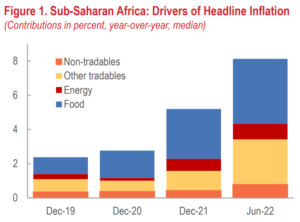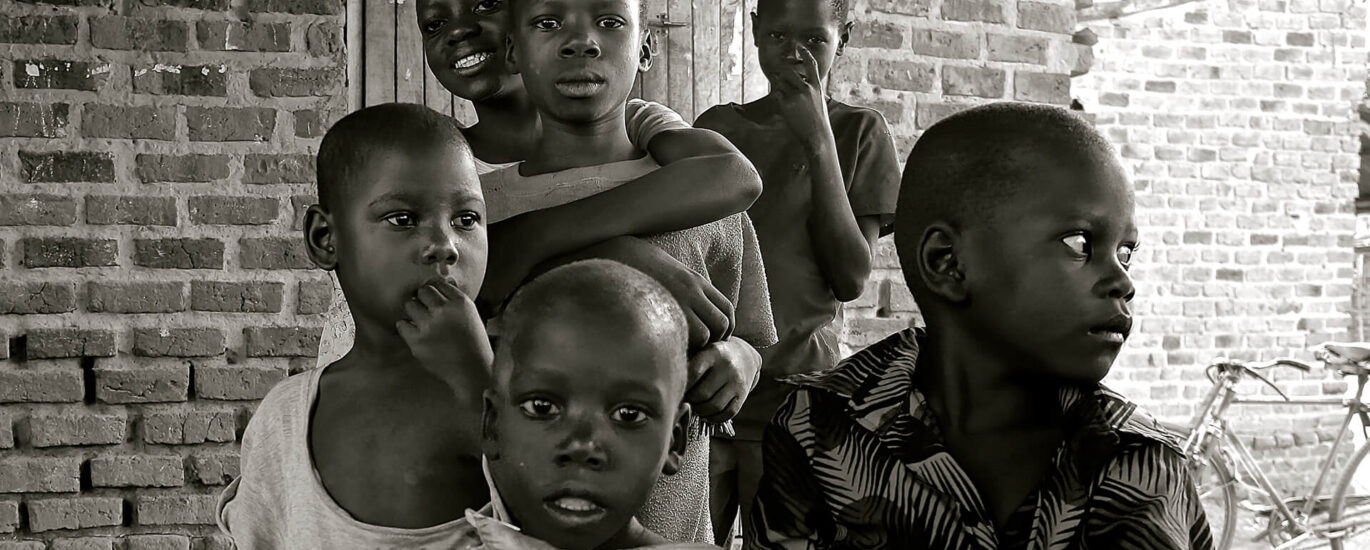Inflation has been increasing in sub-Saharan Africa since
the start of the pandemic. Median inflation reached
almost 9 percent as of July 2022 compared with a
prepandemic (2009–19) average of a little more than
5 percent. Although inflation is currently at its highest
in a decade, it remains below the peak of 12 percent
(median) in the region during the global financial crisis.
With limited domestic demand pressures, external
factors—such as global commodity prices and supply
chain disruptions—have been the major drivers of
inflation over the past year.1
• Food inflation has increased sharply since 2019
(Figure 1). Given that many countries in the region
rely on food imports, the recent surge in international
food prices has increased pressure on domestic food
prices. As a result, food inflation has averaged more
than 10 percent since the second half of 2021,
contributing up to two-thirds to inflation in fragile
states and one-half elsewhere. However, even for this
component, there is significant heterogeneity across
countries, suggesting that domestic factors such as
climate shocks, have also played an important role.
• Domestic energy inflation has remained contained so
far. This suggests a largely incomplete pass-through,
likely because of subsidies and price controls. However,
in many countries, higher global energy prices have
fed through indirectly, affecting food price and core
inflation.
Non-tradable core inflation, which better reflects
domestic demand-side pressures and inflation
expectations, has been relatively subdued. Tradable
goods have been a major contributor to core inflation,
while prices for non-tradable goods and services have
increased only modestly. The modest increase in the
contribution of non-tradable goods may reflect the
fact that domestic demand pressures have remained
subdued across the region, and that output is still
well-below its pre-COVID-19 trend. That said,
domestic demand pressures remain important in a
few countries where fiscal policy has been loose (for
example, Ethiopia and Ghana).






